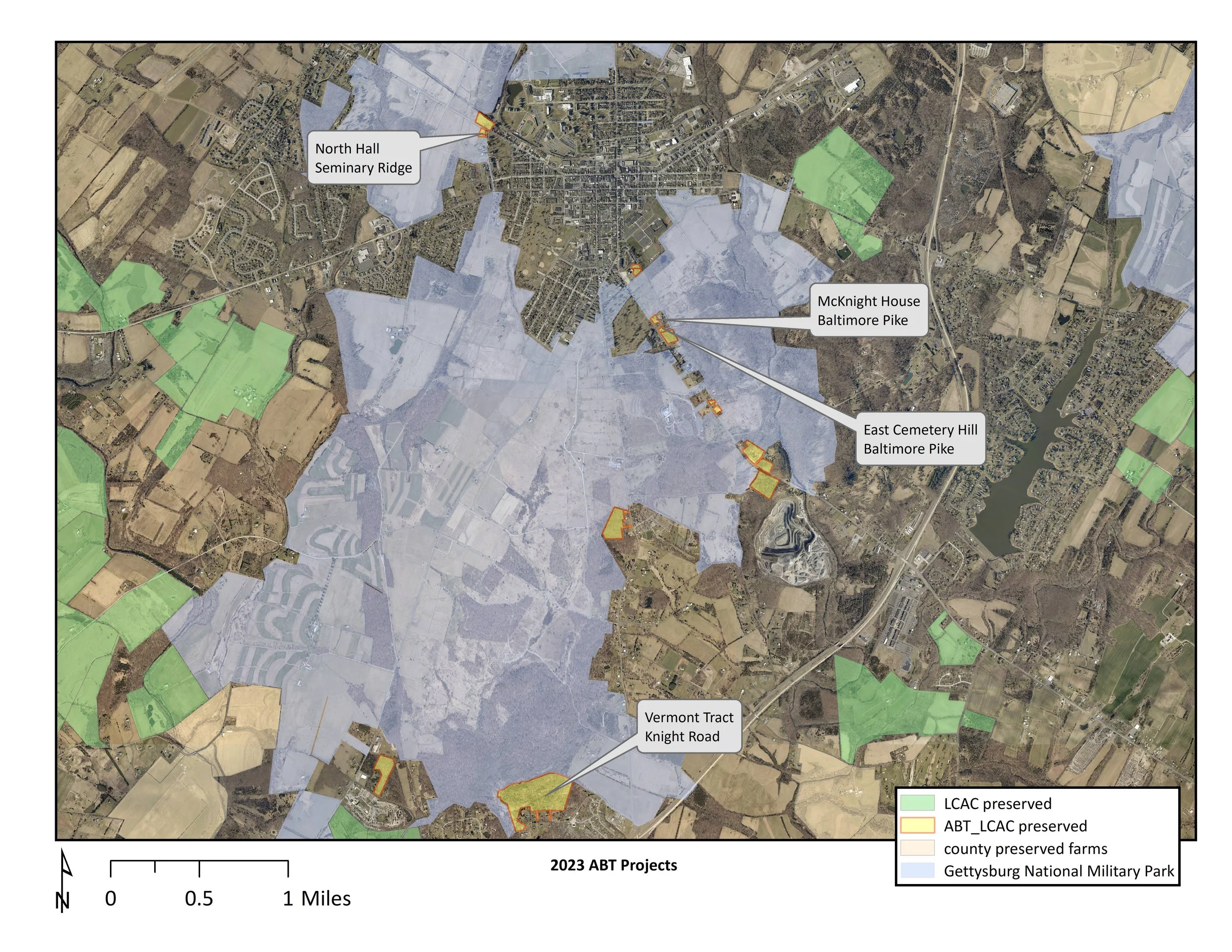Land Conservancy partners with the American Battlefield Trust
Since 2012, the Land Conservancy has been partnering with the American Battlefield Trust to protect parcels in the Gettysburg Battlefield Historic District that are eligible for acquisition by the National Park Service but aren’t yet preserved. The Land Conservancy now holds conservation easements on fifteen parcels covering nearly 100 acres owned by the Trust that are waiting for their eventual incorporation into the Gettysburg National Military Park.
The four parcels that were preserved this year are in strategic locations that connect to existing Battlefield areas. On Seminary Ridge, North Hall was purchased by the Trust and will be evaluated for its historical significance and possible restoration. On the east side of Baltimore Pike just south of Slocum Avenue, two more parcels have now been acquired, which continues the Trust’s work to fill in gaps of the Park Service’s sawtooth boundary along that major gateway into Gettysburg. A fourth parcel is uncharacteristically large for the projects we typically do with the Trust, comprising 47 acres on Knight Road. This property lies just south of the forested slopes of Big Round Top, and at one time was proposed for a residential subdivision for 48 homes.
When the Trust purchases these properties, it restores them to their appearance at the time of the battle in preparation for their transfer to the Park Service. It takes an act of Congress to amend the boundary of the National Military Park, a lengthy process which is the reason why none of the properties have yet been conveyed. Luckily, there is a work-around. Minor boundary adjustments may be permitted as an administrative change, which can occur when the value of the parcels is under a certain threshold. The Trust and Park Service are currently pursuing this approach to get a few smaller properties incorporated into the National Military Park, at which time the conservation easements held by the Land Conservancy will be extinguished. We are pleased to play a role in protecting one of our nation’s most important historic landscapes, a place that we call home.

